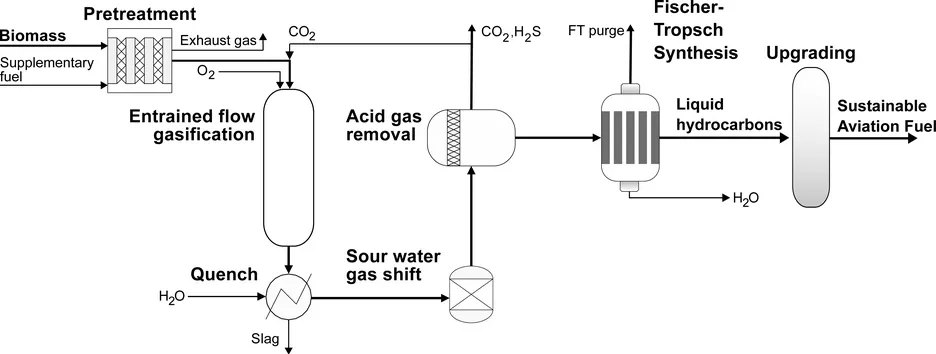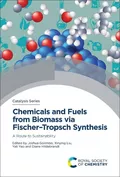New publication on sustainable aviation fuel from biomass by gasification and Fischer-Tropsch synthesis.
TUM.PtX News |
In this process, syngas is converted into long-chain hydrocarbons by Fischer-Tropsch synthesis (FTS). SAF produced by FTS is considered a drop-in fuel, which means that existing aircraft can run on SAF without technical modifications. In addition, the use of sustainable biomass residues shows a high potential for emission reduction. In the newly published book chapter "Sustainable Aviation Fuel from Biomass via Gasification and Fischer-Tropsch Synthesis" [doi] from "Chemicals and Fuels from Biomass via Fischer-Tropsch Synthesis: A Route to Sustainability", the specific BtL-FT route to produce SAF is described.

The process consists of torrefaction of lignocellulosic biomass residues, oxygen-blown entrained flow gasification, gas processing, and FTS, and yields liquid hydrocarbon fuels with high selectivity for SAF for further upgrading. Modeling of different pathway configurations-including integration of materials and heat and variation of process parameters-shows the potential of the BtL-FT pathway to produce SAF efficiently in both the short and medium term.
Book chapter in Media-TUM: https://mediatum.ub.tum.de/node?id=1692983&change_language=en
An innovative approach in which the described process is supplemented by water electrolysis has already been investigated at the Chair of Energy Systems. The addition of green hydrogen enables high carbon efficiency in the production of sustainable fuels. This power-and-biomass-to-liquid (PBtL) process combines the concepts of using biomass as a carbon and energy source (biomass-to-liquid) and hydrogen as an energy carrier derived from carbon-neutral renewables (power-to-liquid).
